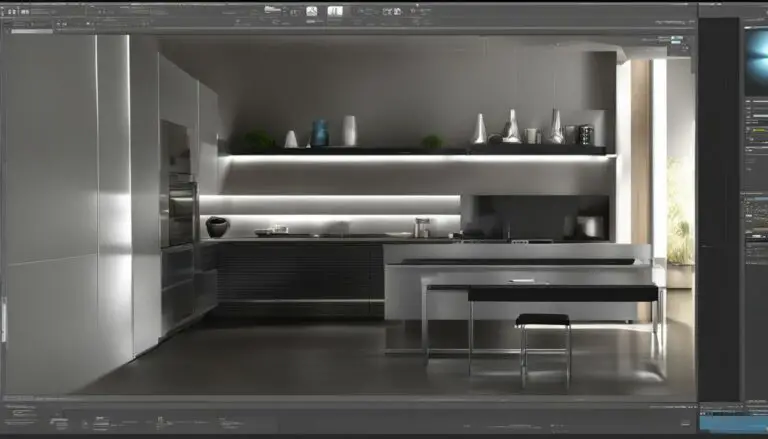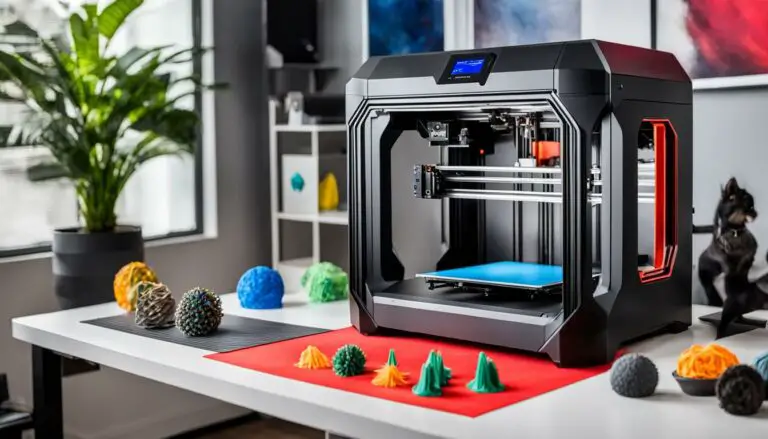What is Sublimation Printing?
Originally posted on July 15, 2023 @ 3:57 pm
Can you explain what sublimation printing is? It is a widely used technique in textile and graphic design that produces vibrant and durable prints on a range of materials. This innovative method transfers dye onto surfaces like fabrics, ceramics, and metal, resulting in high-quality designs that are resistant to fading.
1. Introduction
In today’s world, where aesthetics and personalization play a crucial role, sublimation printing has gained immense popularity. It allows for the creation of unique and eye-catching designs with exceptional color vibrancy. Whether it’s for apparel, home décor, promotional items, or personalized gifts, sublimation printing offers endless possibilities for creativity.
2. How Does Sublimation Printing Work?
Sublimation printing involves the transformation of solid dye particles into a gas state without passing through the liquid phase. This is achieved by applying heat and pressure to a specialized transfer paper, which contains the desired design. The heat causes the solid dye particles to convert into a gas, allowing them to penetrate the surface of the material and bond with its fibers.
3. The Sublimation Printing Process
The sublimation printing process can be broken down into the following steps:
Step 1: Design Creation
The first step in sublimation printing is creating or selecting a design using graphic design software. This design is typically in CMYK color mode to ensure accurate color reproduction during the printing process.
Step 2: Printing onto Transfer Paper
Once the design is finalized, it is printed onto a specialized transfer paper using sublimation inks. These inks are formulated with dyes that can sublimate when exposed to heat.
Step 3: Transfer onto the Material
The printed transfer paper is then aligned and placed on the target material, such as fabric or ceramic. Heat and pressure are applied using a heat press machine, which causes the dye on the transfer paper to sublimate and bond with the material’s surface.
Step 4: Cooling and Finishing
After the sublimation process, the material is allowed to cool down, which solidifies the dye particles and embeds them into the fabric or coating. The final result is a vibrant, high-definition print that is resistant to fading, cracking, and peeling.
4. Advantages of Sublimation Printing
Sublimation printing offers several advantages over traditional printing methods. Some key benefits include:
- Vibrant and Long-Lasting Prints: Sublimation prints exhibit vivid colors and sharp details that can withstand repeated washing and extended use.
- All-Over Printing: Sublimation allows for seamless and continuous printing across the entire surface of the material, including complex designs and patterns.
- Durability: The sublimation process creates a permanent bond between the dye and the material, resulting in prints that are highly resistant to fading and abrasion.
- Customization and Personalization: Sublimation printing enables the production of unique, one-of-a-kind designs tailored to individual preferences and requirements.
- Quick Turnaround Time: Sublimation printing is a fast process, making it ideal for on-demand or short-run production.
5. Suitable Materials for Sublimation Printing
Sublimation printing works best on materials that have a polymer coating or a high polyester content. Some commonly used materials include:
- Polyester fabrics and garments
- Ceramic mugs and plates
- Aluminum sheets and metal panels
- Polyester-coated items, such as phone cases and keychains
6. Limitations of Sublimation Printing
While sublimation printing offers numerous advantages, it also has a few limitations to consider:
- Material Compatibility: Sublimation printing works best on materials that can withstand high heat and have a polymer-coated surface or polyester content. Natural fibers, such as cotton, are not suitable for sublimation.
- Light-Colored Materials: Sublimation inks are translucent, which means they work best on light-colored or white materials. Dark-colored fabrics may affect the color accuracy and vibrancy of the print.
- Initial Investment: Sublimation printing requires specialized equipment, including a heat press machine and sublimation printer, which can be costly for small-scale operations.
7. Applications of Sublimation Printing
Sublimation printing finds applications in various industries and creative endeavors, including:
- Apparel and Fashion: Custom t-shirts, sportswear, leggings, and swimwear.
- Home Décor: Customized pillows, curtains, bedding, and wall art.
- Promotional Products: Keychains, mousepads, coasters, and magnets.
- Sublimation Blanks: Ready-to-print items specifically designed for sublimation, such as puzzles, mugs, and phone cases.
8. Sublimation Printing vs. Other Printing Methods
Sublimation printing differs from other printing methods in terms of its advantages, limitations, and suitable materials. Here’s a comparison of sublimation printing with some commonly used techniques:
- Screen Printing: Sublimation offers more vibrant colors, intricate details, and a smoother finish compared to screen printing. However, screen printing is more suitable for cotton and dark-colored fabrics.
- Direct-to-Garment (DTG) Printing: DTG printing provides excellent color accuracy and is suitable for smaller quantities or single-piece printing. Sublimation printing is more cost-effective for larger production runs and offers all-over printing capability.
- Heat Transfer Vinyl (HTV): HTV involves cutting and pressing pre-colored vinyl onto the material. Sublimation printing allows for unlimited colors and complex designs without the need for layering or cutting.
9. Tips for Successful Sublimation Printing
To achieve the best results with sublimation printing, consider the following tips:
- Use High-Quality Sublimation Inks and Transfer Paper: Ensure that you are using reputable sublimation inks and transfer paper to achieve vibrant and durable prints.
- Optimize Color Profiles: Calibrate your printer and monitor settings to ensure accurate color reproduction.
- Choose the Right Materials: Use materials specifically designed for sublimation printing to achieve the best results.
- Test and Adjust: Perform test prints and make necessary adjustments to optimize colors, heat, and pressure settings before starting production.
- Follow Proper Care Instructions: Provide customers with care instructions to maintain the longevity of sublimated items.
10. Maintenance and Care of Sublimation Prints
Sublimation prints require proper care to ensure their longevity. Here are some general guidelines for maintaining sublimated items:
- Wash garments inside out with cold water and mild detergent.
- Avoid bleach and fabric softeners as they can damage the print.
- Dry garments at a low temperature or air-dry them to prevent excessive heat exposure.
- Do not iron directly on the sublimated print; instead, iron the garment inside out or use a pressing cloth.
- Store sublimated items away from direct sunlight to prevent color fading.
By following these care instructions, you can enjoy the vibrancy and durability of your sublimation prints for a long time.
11. Environmental Impact of Sublimation Printing
Sublimation printing is often considered a more environmentally friendly option compared to traditional printing methods. Here’s why:
- Reduced Waste: Sublimation printing produces minimal waste as there is no need for screens or plates. Unused dye on the transfer paper can be recycled or reused.
- Water Conservation: Unlike screen printing, which requires extensive water usage for cleaning screens, sublimation printing is a dry process that doesn’t involve water consumption.
- Energy Efficiency: Sublimation printing requires less energy compared to other printing methods since the heat press machine operates at lower temperatures and for shorter durations.
However, it’s important to note that the environmental impact also depends on the disposal of sublimation ink cartridges and the energy source used for production.
12. Conclusion
Sublimation printing is a versatile and efficient method for creating vibrant and durable prints on various materials. Whether you’re a textile manufacturer, a graphic designer, or an individual looking to add a personalized touch to your belongings, sublimation printing offers endless creative possibilities. With its long-lasting and high-quality results, this printing technique continues to revolutionize the world of customization and design.
13. FAQs
Q1. Can sublimation printing be done on cotton fabrics? Sublimation printing works best on materials with a high polyester content or a polymer-coated surface. Cotton fabrics are not suitable for sublimation as the dye requires polyester fibers to bond with.
Q2. Are sublimation prints resistant to fading? Yes, sublimation prints are highly resistant to fading. The sublimation process creates a permanent bond between the dye and the material, resulting in prints that maintain their vibrancy even after repeated washing and prolonged use.
Q3. Can I sublimate on dark-colored materials? Sublimation inks are translucent, which means they work best on light-colored or white materials. Dark-colored fabrics may affect the color accuracy and vibrancy of the print. It’s recommended to use light-colored materials for optimal results.
Q4. Can I sublimate on non-fabric materials? Yes, sublimation printing is not limited to fabrics. It can be used on various materials such as ceramics, metals, and polyester-coated items like phone cases and keychains.
Q5. Is sublimation printing cost-effective for small-scale production? The initial investment in sublimation equipment can be higher compared to other printing methods. However, once set up, sublimation printing becomes cost-effective for both small-scale and large-scale production due to its fast turnaround time and the ability to produce high-quality prints.
In conclusion, sublimation printing is a versatile and impactful technique that allows for the creation of vibrant, long-lasting prints on various materials. With its unique advantages, such as all-over printing, customization options, and durability, sublimation printing continues to be a popular choice for designers, manufacturers, and individuals seeking to make a statement through their printed creations.








